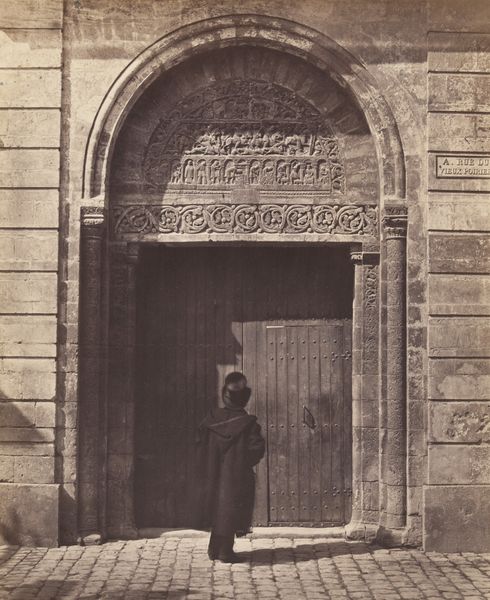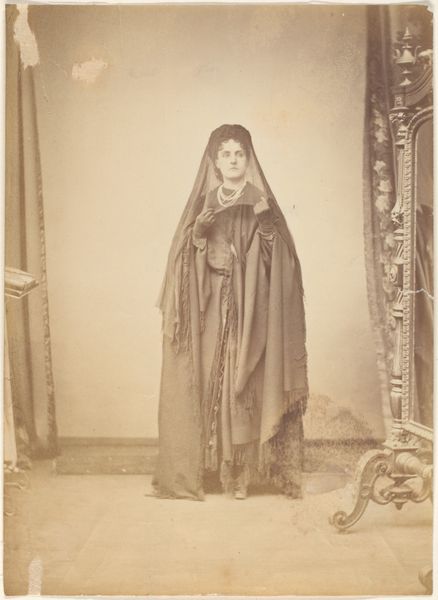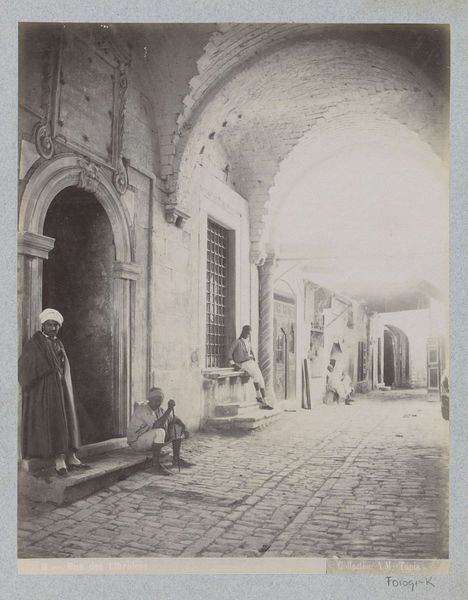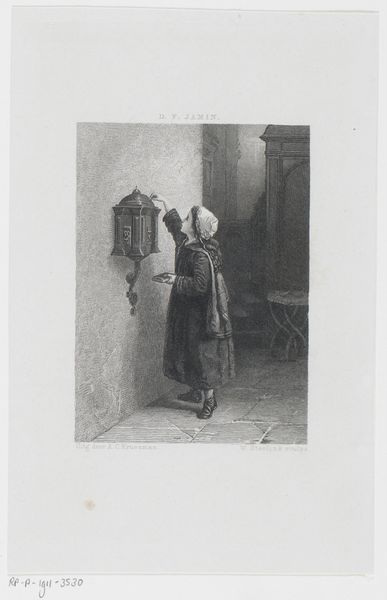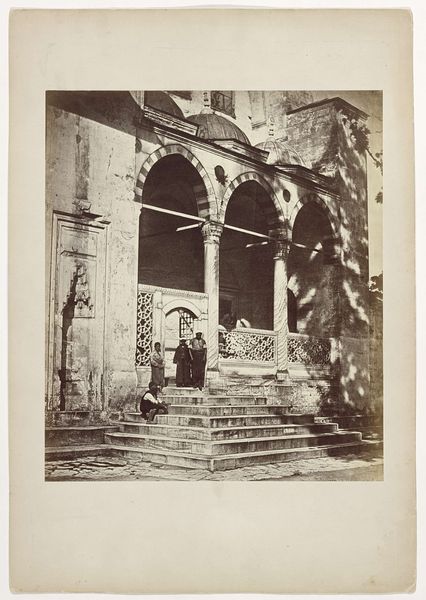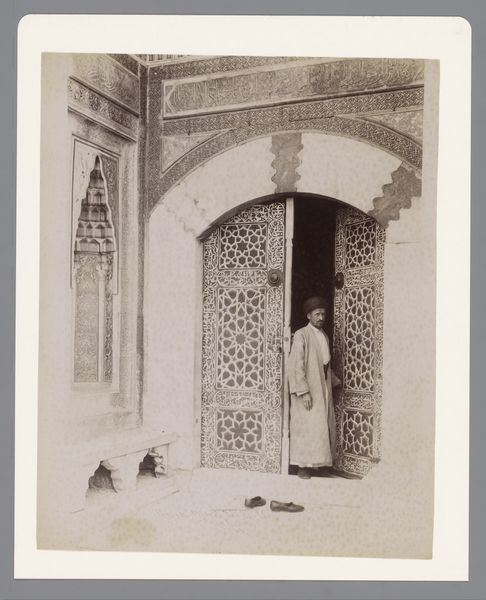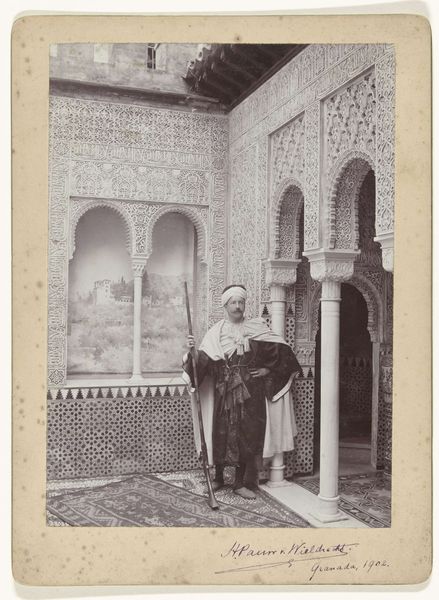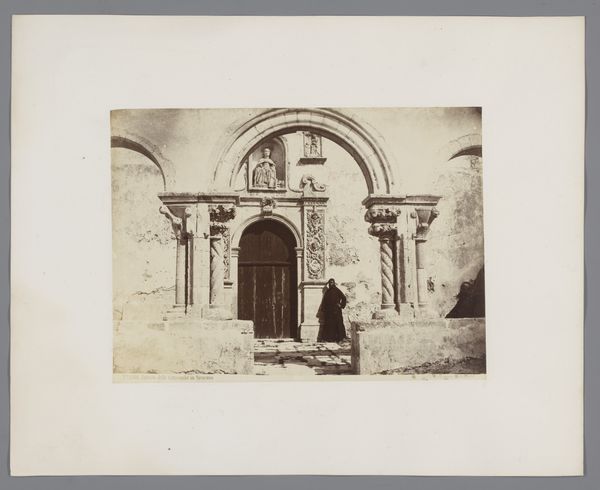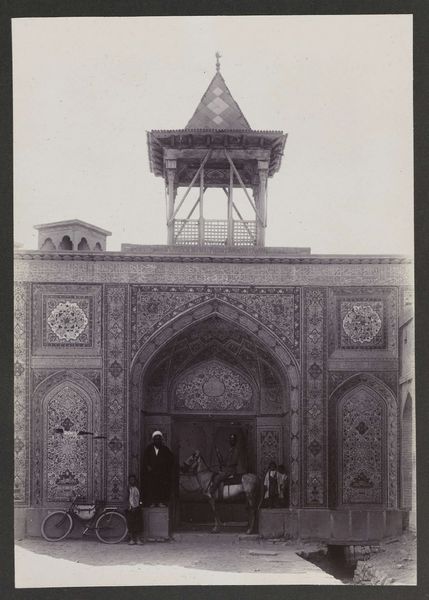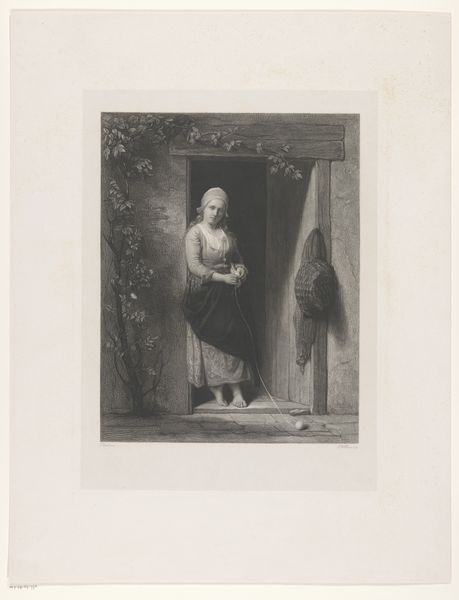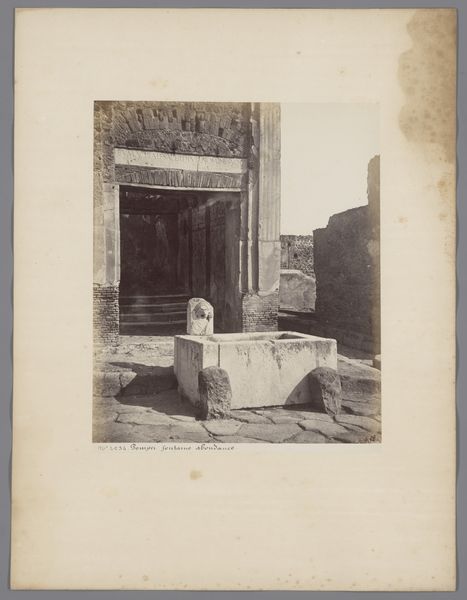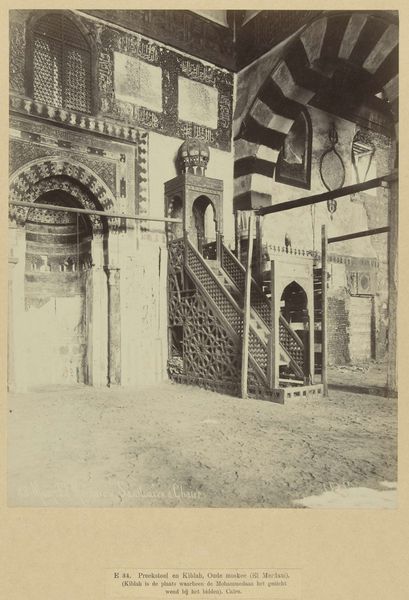
#
pencil drawn
#
light pencil work
#
pencil sketch
#
charcoal drawing
#
charcoal art
#
pencil drawing
#
surrealism
#
portrait drawing
#
watercolour illustration
#
pencil art
Dimensions: height 275 mm, width 209 mm
Copyright: Rijks Museum: Open Domain
Curator: Immediately, I am struck by the way this image conveys a sense of enclosure and anticipation, almost a voyeuristic peek into another world. Editor: Indeed, this photograph titled "Two Women in a Doorway in Tlemcen, Algeria" is attributed to Neurdein Frères and was created sometime between 1900 and 1918. What I find fascinating is the texture, you know? The rough-hewn quality of the doorway juxtaposed with the softer fabrics. Curator: Precisely. The juxtaposition speaks volumes about the interplay between private and public life in early 20th-century Algeria. It seems these open doors serve as an invitation but also a clear demarcation. The use of natural light seems critical, highlighting every flaw, every deliberate adornment on those wooden doors. Editor: And let’s not forget the socio-political context. Algeria was under French colonial rule during this period. How do you see this piece reflecting the colonial gaze, perhaps? Curator: I think that's a crucial point. Photography at this time was often used to exoticize and document colonized populations. Here, the covered women and the emphasis on the architectural detail of the doorway seem to serve that function, portraying a controlled vision of Algerian life for a Western audience. Are they complicit, or just observed? The labor that built these door frames isn't considered as “high art” but it seems so refined! Editor: Absolutely. It's about power, who has the right to represent whom and how. And the act of photographing itself involves materials: the camera, the developing process, even the paper the image is printed on, is subject to social power dynamics. Do we consider that a part of this composition? Curator: Undoubtedly. Thinking about that power dynamic is exactly where we, as viewers, play a crucial role in shaping its contemporary reception and legacy. How do we navigate that visual archive critically? It demands a response! Editor: It is an incredibly layered photograph, one that offers so much to consider about representation, materials, and the ever-present gaze of history. Curator: A fitting subject indeed, demonstrating the intersection of history, craft and visual consumption!
Comments
No comments
Be the first to comment and join the conversation on the ultimate creative platform.
